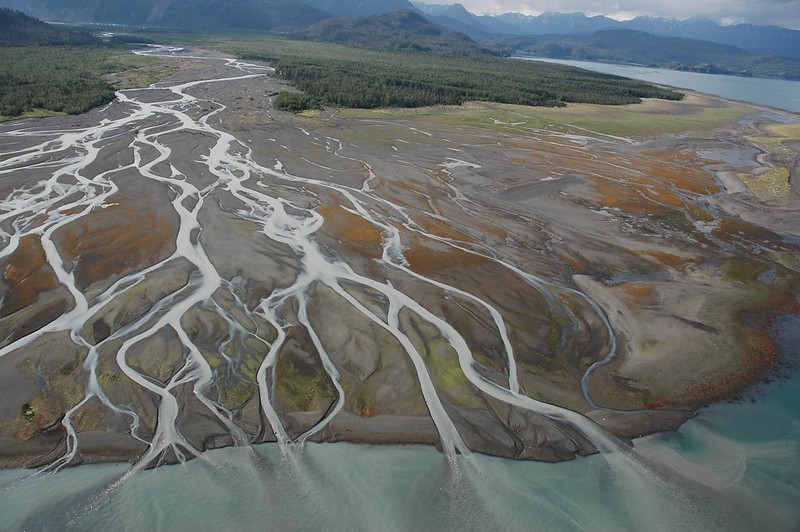Model Answer Introduction The Indonesian and Philippine archipelagos are home to thousands of islands, shaped by complex geological processes over millions of years. Understanding the formation mechanisms of these islands is essential for addressing potential natural hazards in the region. Body PlatRead more
Model Answer
Introduction
The Indonesian and Philippine archipelagos are home to thousands of islands, shaped by complex geological processes over millions of years. Understanding the formation mechanisms of these islands is essential for addressing potential natural hazards in the region.
Body
Plate Tectonics and Volcanism
The Role of Plate Tectonics
Both archipelagos are situated along the Pacific Ring of Fire, a region known for its active volcanoes and frequent earthquakes. This area experiences intense tectonic activity, where multiple tectonic plates interact.
The Subduction Process
The Indonesian and Philippine islands lie at the convergence of several tectonic plates, including the Eurasian Plate, Philippine Sea Plate, Pacific Plate, and Indo-Australian Plate. The interaction of these plates creates subduction zones, where denser oceanic plates are forced beneath less dense continental plates, leading to volcanic activity.
Volcanic Eruptions
As oceanic plates subduct, they melt rocks in the Earth’s mantle, forming magma that rises to the surface and erupts as volcanoes. Over time, repeated volcanic eruptions accumulate volcanic material, contributing to the formation of new islands.
Sedimentation and Erosion
Role of Sedimentation
In addition to volcanism, sedimentation plays a crucial role in island formation. Rivers discharge sediment into the ocean, which can settle on the ocean floor, creating shallow banks or reefs.
Island Formation
The accumulation of sediment and organic materials can lead to the emergence of islands. Erosion further shapes these landscapes, as wind and water erode volcanic materials and expose underlying rock formations.
Sea Level Changes
The Impact of Sea Level Changes
Fluctuations in sea levels also contribute to island formation. During periods of low sea levels, submerged areas can emerge, creating new land masses. Conversely, rising sea levels can submerge previously exposed land, causing islands to disappear.
Conclusion
The islands of the Indonesian and Philippine archipelagos are formed through intricate geological processes, including plate tectonics, volcanism, sedimentation, erosion, and sea level changes. These dynamic interactions over millions of years have resulted in the diverse and complex island systems we see today, which are vital for understanding the region’s natural phenomena and mitigating potential hazards.
See less


Improving soil fertility involves several effective strategies that enhance nutrient availability, soil structure, and overall health for sustainable agriculture: Organic Matter Addition : Composting organic waste and incorporating it into the soil enriches it with essential nutrients, improves moisRead more
Improving soil fertility involves several effective strategies that enhance nutrient availability, soil structure, and overall health for sustainable agriculture:
Organic Matter Addition : Composting organic waste and incorporating it into the soil enriches it with essential nutrients, improves moisture retention, and boosts microbial activity crucial for nutrient cycling.
Crop Management: Implementing crop rotation prevents nutrient depletion by alternating crops with different nutrient needs. Cover cropping protects soil from erosion, adds organic matter when plowed under, and enhances soil fertility. Soil Amendments: Applying lime adjusts soil pH, making nutrients more accessible to plants, while gypsum improves soil structure and provides calcium and sulfur essential for plant growth. Biochar enhances soil fertility by improving water retention and nutrient availability.
Conservation Practices : Minimizing tillage reduces soil compaction, preserves soil structure, and minimizes erosion. Contour farming and terracing on slopes prevent runoff and retain soil nutrients. Balanced Fertilization : Using chemical fertilizers judiciously based on soil test results ensures plants receive adequate nutrients without excess that can lead to environmental pollution.
Biological Methods : Introducing beneficial microorganisms like mycorrhizal fungi and earthworms enhances soil health and nutrient availability through symbiotic relationships and enhanced soil structure. By integrating these methods, farmers can sustainably improve soil fertility, promoting healthier crops, increased yields, and environmental stewardship for future generations.
See less